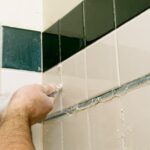When it comes to home improvements, many homeowners may not be aware of the potential tax benefits that can come along with these expenses. It is important to understand the tax implications and reporting requirements for home improvement projects when preparing your tax return. By properly documenting and reporting your home improvement expenses, you may be eligible for deductions or tax credits that can help offset the costs of these investments.
One key aspect to consider is the distinction between tax deductions and tax credits. Understanding the difference between these two can help homeowners determine which approach is more advantageous for their specific situation. Deducting home improvement expenses allows you to reduce your taxable income, while claiming tax credits provides a dollar-for-dollar reduction in your tax liability.
To ensure accurate reporting, it is crucial to identify which home improvement expenses qualify for deductions or credits. The IRS provides guidelines on what types of renovations or upgrades can be claimed. By familiarizing yourself with these guidelines, you can determine if your particular projects meet the criteria.
In the following sections, we will delve deeper into these topics and provide step-by-step instructions on how to report home improvement expenses on your tax return. We will also discuss specific forms, such as Schedule A and Form 5695, that are used to report deductions and credits related to home improvements.
Additionally, we will provide tips on how to maximize your tax benefits, common mistakes to avoid during reporting, and situations where consulting a tax advisor may be beneficial. Don’t miss out on potential savings – continue reading to learn how to make the most of available tax benefits for your home improvement projects.
Tax Deductions vs. Tax Credits
When it comes to reporting home improvements on your tax return, it’s important to understand the difference between tax deductions and tax credits. While both can provide potential tax benefits, they work in different ways and have different implications for homeowners.
Tax deductions allow you to reduce your taxable income by claiming eligible expenses. This means that the deduction reduces the amount of income that is subject to taxation. In the case of home improvements, certain expenses may qualify as deductions if they meet specific criteria set by the IRS.
On the other hand, tax credits directly reduce the amount of taxes you owe. They are a dollar-for-dollar reduction in your tax liability. Tax credits for home improvements are typically available for making energy-efficient upgrades or installing renewable energy systems in your home.
So which approach is more advantageous for homeowners? It depends on your individual circumstances and financial goals. If you have a substantial amount of eligible expenses, claiming deductions may result in significant tax savings by reducing your taxable income. However, if you have qualifying home improvements that are eligible for tax credits, these credits can provide a direct reduction in your tax bill.
| Tax Deductions | Tax Credits |
|---|---|
| – Reduce taxable income | – Direct reduction in taxes owed |
| – Based on eligible expenses | – Available for specific types of improvements |
| – Claimed on Schedule A (Itemized Deductions) | – Utilize Form 5695 (Residential Energy Credits) |
By understanding these differences and carefully evaluating your home improvement expenses, you can determine whether claiming deductions or tax credits will provide the most advantageous outcome for your specific situation. It’s recommended to consult with a tax professional or financial advisor to help you navigate through the various options and maximize your tax benefits.
Identifying Eligible Home Improvement Expenses
When it comes to reporting home improvements on your tax return, it is crucial to understand which expenses are eligible for deductions or credits. By identifying the eligible home improvement expenses, homeowners can maximize their tax benefits and potentially save a significant amount of money.
To determine what qualifies as an eligible home improvement expense, it is important to refer to the guidelines provided by the IRS. The IRS considers certain types of expenses to be qualified if they add value to the property, prolong its useful life, or adapt it for new uses. Some common examples of eligible home improvement expenses include:
- Renovations and additions: This includes repairs or modifications that enhance the functionality or aesthetics of your home, such as adding a new room or renovating a kitchen.
- Energy-efficient upgrades: Homeowners can often claim tax credits for making energy-efficient improvements, such as installing solar panels or upgrading insulation.
- Accessibility modifications: Expenses related to making your home more accessible for disabled individuals may also qualify, such as adding ramps or widening doorways.
- Roof repairs or replacements: If you have incurred costs for repairing or replacing your roof due to damage from natural disasters or other unforeseen events, those expenses may also be eligible.
In addition to these examples, there may be other specific expenses that meet the IRS criteria for eligibility. It is important to review the IRS guidelines thoroughly or consult with a tax professional for more detailed information.
| Expense Category | Description |
|---|---|
| Renovations and Additions | Includes repairs or modifications that enhance functionality or aesthetics. |
| Energy-efficient Upgrades | Includes improvements that make your home more energy-efficient. |
| Accessibility Modifications | Expenses related to making your home more accessible for disabled individuals. |
| Roof Repairs or Replacements | Costs for repairing or replacing your roof due to damage from natural disasters or unforeseen events. |
By identifying the eligible home improvement expenses and understanding the IRS guidelines, homeowners can accurately report these expenses on their tax return. This not only ensures compliance with tax laws but also allows for potential deductions or credits that can result in substantial tax savings.
Schedule A
How to Report Home Improvement Expenses on Schedule A
When it comes to reporting home improvement expenses on your tax return, one option is to claim itemized deductions using Schedule A. This allows you to deduct the cost of eligible home improvements from your taxable income, potentially lowering your overall tax liability.
To report home improvement expenses on Schedule A, you will need to gather all relevant documentation and receipts for the work done. This includes invoices, contracts, and proof of payment. It is essential to keep accurate records as the IRS may request supporting documentation in case of an audit.
Once you have all the necessary paperwork, you can calculate your total home improvement expenses and input the amount on Schedule A under the section labeled “Job Expenses and Miscellaneous Deductions.” Be sure to include a detailed breakdown of each expense category such as materials, labor costs, and any professional fees paid.
Calculating and Claiming Deductions for Home Improvements
To calculate the deductible amount for your home improvement expenses, break down the costs into categories that qualify for deductions. These categories might include improvements that increase the value of your home, adapt it for medical purposes, or improve energy efficiency.
Remember that not all home improvements are eligible for deductions. General repairs or maintenance tasks cannot be claimed unless they are part of a larger project that meets the IRS criteria for deduction eligibility.
After calculating your total deductible amount, transfer it from Schedule A to Form 1040 as an itemized deduction. Keep in mind that there may be limitations based on your adjusted gross income (AGI) or other factors. It’s important to consult IRS guidelines or seek professional advice if you have questions about specific deduction limits or requirements.
Understanding the Benefits of Itemized Deductions
Choosing to claim itemized deductions rather than taking the standard deduction might result in significant tax savings for homeowners who have incurred substantial home improvement expenses. With itemized deductions, you have the potential to deduct the full amount of your eligible home improvement costs, which can help reduce your taxable income.
However, it’s important to carefully evaluate whether claiming itemized deductions is more advantageous for your financial situation. Consider comparing the total amount of deductible home improvement expenses against the standard deduction provided by the IRS for your filing status. If your itemized deductions exceed the standard deduction, it may be beneficial to go ahead with Schedule A.
Ultimately, deciding whether to claim itemized deductions or take the standard deduction depends on individual circumstances such as income level, overall tax liability, and other eligible deductions or credits you may qualify for. Before making a decision, consult IRS guidelines or seek advice from a qualified tax professional to ensure you make an informed choice and maximize your tax benefits.
Form 5695
One of the ways homeowners can benefit from tax savings on their home improvements is by utilizing Form 5695 to claim residential energy credits. This form allows taxpayers to claim credits for the installation of certain energy-efficient improvements in their homes. These credits can help offset the costs of making these upgrades and provide additional incentives for homeowners to invest in energy-efficient technologies.
Understanding the Criteria and Limitations
Before filling out Form 5695, it’s important to understand the specific criteria and limitations for each available credit. The form allows you to claim credits for various energy-efficient improvements, such as solar panels, wind turbines, geothermal heat pumps, and more. However, each credit has its own eligibility requirements and limitations.
For example, the residential energy property credit covers expenses related to the installation or purchase of qualified solar electric property, solar water heating property, small wind energy property, geothermal heat pump property, and fuel cell property. On the other hand, the nonbusiness energy property credit includes expenses for items like insulation materials, highly efficient central air conditioners or heat pumps, water heaters, windows and doors, biomass stoves, and more.
It’s crucial to review each credit carefully and gather all necessary documentation related to your home improvement project before completing Form 5695. This will ensure that you meet all requirements and are eligible for any applicable credits.
Completing Form 5695
To complete Form 5695 accurately, you’ll need to provide detailed information about your home improvement expenses. This includes:
- The type of improvement or technology installed (e.g., solar panels).
- The cost of the improvement.
- The date when it was placed in service.
- Any additional information required by specific tax credits (e.g., certification statements).
You’ll then calculate your allowable credit amount based on the instructions provided on the form. Remember to double-check your calculations and ensure that you’re claiming the correct amount for each credit.
Once completed, Form 5695 should be attached to your income tax return when filing. Be sure to keep a copy of the form and any supporting documentation for your records.
By utilizing Form 5695, homeowners can take full advantage of available tax credits for their energy-efficient home improvements. It’s important to review and understand the criteria and limitations for each credit before completing the form, as well as accurately provide all necessary information. Filing Form 5695 correctly will help maximize your potential tax benefits and incentive savings for your energy-efficient home upgrades.
Documenting and Supporting Your Home Improvement Expenses
When it comes to reporting home improvement expenses on your tax return, diligent documentation and supporting evidence are crucial. Keeping accurate records not only ensures compliance with IRS guidelines but also helps maximize your potential tax benefits. Here are some important tips for documenting and supporting your home improvement expenses.
First and foremost, it is essential to keep all receipts, invoices, contracts, and any other relevant paperwork related to your home improvement projects. These documents serve as evidence of the expenses you incurred and help substantiate your claims if audited by the IRS. Additionally, maintaining a detailed record of the work performed, including dates, names of contractors or service providers, and descriptions of the improvements made, can provide further support for your deductions or credits.
In addition to receipts and contracts, it is also advisable to take before-and-after photos of the areas that were improved. These visual records can help demonstrate the extent of the upgrades made to your property and provide additional proof of the home improvement expenses claimed on your tax return.
Furthermore, if you financed any part of your home improvement project through a loan or line of credit specifically designated for that purpose, ensure you retain statements or other documentation reflecting these transactions. This information can be used to verify that the funds obtained were indeed used for eligible improvements.
It is important to note that different rules apply depending on whether you plan to deduct home improvement expenses or claim energy credits. Therefore, be sure to consult IRS guidelines or seek professional advice regarding specific requirements for proper documentation based on the type of benefit you are seeking.
By diligently documenting and organizing all records related to your home improvement expenses, you can strengthen your position during a potential IRS audit while ensuring accurate reporting on your tax return. Taking the time to gather and maintain this critical information will ultimately help you make use of valuable tax savings opportunities when filing taxes after completing home improvements.
Tips for Maximizing Your Tax Benefits
When it comes to reporting home improvements on your tax return, there are several strategies you can employ to maximize your tax benefits. By following these tips, you can ensure that you are taking full advantage of the available deductions and credits for your home improvement expenses.
- Keep detailed records: It is crucial to maintain accurate records and documentation for all your home improvement expenses. This includes receipts, invoices, and contracts showing the cost of materials, labor, and any other related expenses. These records will be essential when calculating your deductions or credits, as well as in case of an audit.
- Explore all eligible expenses: Familiarize yourself with the IRS guidelines for what qualifies as a home improvement expense. While major renovations or additions may immediately come to mind, there are also numerous smaller projects that may be eligible for deductions or credits. This can include installing energy-efficient appliances, adding insulation or energy-efficient windows, or even making modifications for accessibility purposes.
- Consider timing: The timing of your home improvement projects can impact your tax benefits. For example, if you plan to claim a tax credit for energy-efficient improvements, check the expiration date of the credit to ensure that your project is completed before that deadline. Additionally, strategic planning of your home improvement projects can help optimize your deductions by spreading them out over multiple tax years to potentially reduce your overall tax liability.
By following these tips, homeowners can make the most of available tax benefits and incentives for their home improvement projects. Remember that tax laws and regulations change frequently, so it is always advisable to consult with a tax professional or refer to IRS publications for the most up-to-date information on claiming deductions and credits for home improvements.
- Keep detailed records:
- Explore all eligible expenses:
- Consider timing:
Common Mistakes to Avoid When Reporting Home Improvements
When it comes to reporting home improvements on your tax return, there are several common mistakes that taxpayers often make. By understanding these errors and how to avoid them, you can ensure accurate reporting and maximize your tax benefits. Here are some common mistakes to watch out for:
- Failing to Keep Accurate Records: One of the biggest mistakes homeowners make is not keeping detailed records of their home improvement expenses. It is essential to retain receipts, invoices, and any other documentation related to the project. This will help you accurately calculate your deductions or credits and provide proof if the IRS has any questions.
- Not Knowing What Qualifies as a Home Improvement: Another mistake is misunderstanding which expenses can be claimed as home improvements. While major renovations like adding a new room or remodeling a kitchen typically qualify, smaller projects like painting or replacing a faucet may not. It’s important to consult the IRS guidelines or seek advice from a tax professional to determine what qualifies.
- Claiming Non-Qualifying Expenses: Along with not knowing what qualifies as a home improvement, some taxpayers mistakenly claim expenses that don’t meet the criteria set by the IRS. For example, claiming landscaping costs as a home improvement expense may not be allowed unless it directly enhances the value or efficiency of your home.
To avoid these mistakes and ensure accurate reporting of your home improvement expenses, it is recommended to consult with a tax professional or use reliable tax software that can guide you through the process. By seeking expert advice and staying informed about IRS guidelines, you can take advantage of all available tax benefits and incentives for your home improvement projects.
Listed below are some additional tips to help you avoid common mistakes
- Double-check your calculations before submitting your tax return.
- Review IRS publications or consult with a tax advisor if you have any doubts about whether an expense qualifies as a home improvement.
- Familiarize yourself with the specific criteria and limitations for claiming tax credits for energy-efficient home improvements by referring to Form 5695 and the instructions provided by the IRS.
- Plan your home improvement projects strategically to optimize your tax benefits. For example, if you’re planning both energy-efficient upgrades and other home improvements, consider timing them in a way that allows you to claim the maximum amount of tax credits or deductions.
By being aware of common mistakes and taking proactive steps to avoid them, you can ensure that reporting your home improvements on your tax return is accurate and beneficial.
Seeking Professional Help
When it comes to navigating the complexities of reporting home improvements on your tax return, there may be instances where seeking professional help from a tax advisor is beneficial. While filing taxes can be a straightforward process for many homeowners, certain circumstances or issues may arise that require expert guidance. In this section, we will discuss when it is appropriate to consult a tax advisor and the potential benefits of doing so.
One situation where consulting a tax advisor is recommended is if you have undertaken significant and expensive home improvement projects. If your renovations involve major structural changes, additions, or upgrades that impact the value of your property, it can be beneficial to have a professional review your expenses and ensure that you are following the correct IRS guidelines for claiming deductions or credits.
Additionally, if you are unsure about which expenses qualify as eligible home improvements, seeking advice from a tax advisor can provide clarity. The IRS has specific rules regarding what can be claimed as a deduction or credit, and it can be challenging to navigate these guidelines without expert assistance. A tax advisor will have a comprehensive understanding of the regulations and can help ensure that you maximize your tax benefits while avoiding any potential mistakes or penalties.
Furthermore, if you are facing complex tax situations such as being self-employed or owning multiple properties, consulting a tax advisor becomes even more crucial. These scenarios often involve additional considerations and calculations that may not be covered in general tax software or resources. A knowledgeable tax professional will be able to analyze your specific circumstances and provide personalized advice tailored to optimize your tax savings.
Conclusion
In conclusion, understanding the tax implications of home improvements and properly reporting these expenses on your tax return is crucial for homeowners. By claiming eligible home improvement expenses, you can potentially benefit from valuable tax deductions or credits. It is important to differentiate between deducting expenses and claiming tax credits, and determine which approach is more advantageous for your specific situation.
To accurately report home improvement expenses, homeowners should utilize Schedule A on their tax return. This allows them to itemize deductions for qualifying expenses such as repairs, renovations, or additions to their property. Following step-by-step instructions and maintaining accurate documentation will ensure that you claim the appropriate deductions and maximize your tax benefits.
Additionally, Form 5695 provides an opportunity for homeowners to claim residential energy credits for energy-efficient home improvements. Understanding the specific criteria and limitations of each available credit is essential for optimizing your tax savings in this area.
Lastly, it is important to avoid common mistakes when reporting home improvements on your tax return. Familiarize yourself with common errors or misconceptions taxpayers often make and take steps to avoid them. If you have complex cases or unique circumstances, it may be beneficial to consult a tax advisor who can provide expert guidance.
Frequently Asked Questions
Can I claim home improvements on my tax return?
Whether or not you can claim home improvements on your tax return depends on the type of improvement and the purpose for which it was made. Generally, expenses that improve the value or extend the life of your home may qualify for tax deductions or credits. Examples include adding energy-efficient features like solar panels, renovating a bathroom or kitchen, or installing a new heating system.
However, regular maintenance costs or cosmetic enhancements generally do not qualify. It’s important to consult with a tax professional to determine if your specific home improvement expenses are eligible for tax deductions.
Where do I put home improvements on my tax return Turbotax?
When using TurboTax, you will need to report home improvements on different sections of your tax return depending on whether you are claiming them as a deduction or a credit. If you are taking a deduction for certain energy-efficient home improvements, such as installing solar panels, you can report this on Form 5695.
For renovations that increase the value of your home (but don’t qualify for energy efficiency credits), you would typically report these costs as part of your overall itemized deductions on Schedule A. Make sure to keep all relevant documentation and receipts related to your home improvements when using TurboTax, as they may be required in case of an audit.
How much of home improvement is tax deductible?
The amount of home improvement expenses that is tax deductible varies depending on several factors, including the type of improvement and its purpose. Energy-efficient improvements often offer tax credits rather than deductions, allowing you to directly reduce the amount of taxes owed instead of reducing taxable income. These credits may cover a percentage of eligible expenses up to certain limits set by the government.
On the other hand, some renovations that improve the value and utility of your home but do not qualify for specific energy efficiency credits may be considered part of your overall itemized deductions. However, there are limitations and restrictions on claiming these deductions based on factors such as the cost-to-value ratio and income limitations. Consulting with a tax professional can provide accurate guidance on the specific deduction or credit amount you may be eligible for based on your home improvement expenses.

I’m thrilled to have you here as a part of the Remodeling Top community. This is where my journey as an architect and remodeling enthusiast intersects with your passion for transforming houses into dream homes.





